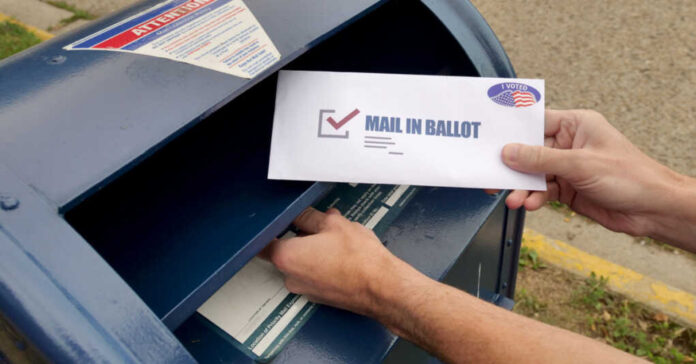
According to the U.S. Election Assistance Commission, in 2016, around 23.7% of ballots, roughly 33 million, were sent in by mail. In 2020, this figure nearly doubled, with Americans mailing in approximately 65.5 million ballots, marking the highest recorded number in U.S. history.
Per recent research compiled by the Heartland Institute, 28.2%, or one in four, of those mail-in ballots, especially in swing states, involved fraud.
The Heartland Institute is a conservative and libertarian research and policy organization headquartered in Illinois. The institute promotes free-market policies, limited government intervention, and individual liberties across various areas, including economics, healthcare, education, the environment, and more. It has also been involved in debates over climate change, healthcare policy, education reform, and other public policy and governance issues.
Their latest research report on mail-in ballot voter fraud is a doozy.
According to an initial survey conducted by Heartland/Rasmussen in December 2023, 21% of individuals who voted by mail in 2020 acknowledged that they cast their ballots in a state where they are no longer considered permanent residents. Additionally, 21% of mail-in voters admitted to completing a ballot for a friend or family member. Among them, 17% confessed to signing a ballot for a friend or family member, regardless of their permission. Nineteen percent of mail-in voters reported that a friend or family member either partially or entirely filled out their ballot on their behalf.
Heartland analysts took those results to reevaluate the probable extent of fraudulent mail-in ballots during the 2020 election and computed the potential influence these fraudulent ballots might have had in the six pivotal swing states where President Trump was defeated.
For the study, researchers scrutinized the electoral outcomes of the six swing states—Arizona, Georgia, Michigan, Nevada, Pennsylvania, and Wisconsin—assuming the 28.2% fraudulent mail-in ballot scenario derived from the original survey data.
The study researched 29 scenarios with varying degrees of fraudulent voting activity and found that Trump emerged victorious in the 2020 election in all but three instances. According to their analysis, the only scenarios where the official outcome of the 2020 election, with Joe Biden winning, could be confirmed were when the levels of fraudulent mail-in ballots fell between 1 and 3 percent of all ballots cast.
If the rate of mail-in ballot fraud exceeded 3%, the study suggests that there would have been more fraudulent votes for Biden, which should have been subtracted from his total count. This would have put Donald Trump ahead in the election results.
With the adjusted vote counts assuming fraud rates between 6 and 13 percent, Trump would have won in states like Pennsylvania, Arizona, Wisconsin, and Georgia. Even with these adjustments, however, he would still have lost in Nevada and Michigan.
This suggests that even if the level of fraud indicated in the study exaggerates the actual occurrence of fraud, Trump would still have likely clinched the 2020 election. The survey’s margin of potential overestimation of voter fraud does not exceed 25 percentage points, revealing that a significant impact of mail-in ballot fraud on the 2020 presidential election favored Biden.
In other words, the study found that if the 2020 election had followed the traditional pattern of in-person voting, Donald Trump would almost certainly have secured reelection.
Jim Womack, president of the North Carolina Election Integrity Team, agrees that while fraud was present, finding the exact percentages of the activity is impossible. He raised concerns about the survey questions used by the Heartland Institute, suggesting they were unclear. According to him, these questions mixed legal and illegal actions, making it hard to determine the true extent of mail-in ballot fraud.
For example, one question asked if people helped fill out ballots for family members during the 2020 election. However, it didn’t specify whether this help was legal, such as aiding someone with a disability, or illegal, like filling out someone else’s ballot without permission. So, when 21% answered “yes” to this question, it doesn’t necessarily mean they all committed fraud.
Another question asked if people voted in a state where they no longer lived. While 17 % said “yes,” it’s important to note that some situations, like military personnel voting from overseas, are legal under certain circumstances.
Womack argued that spreading the survey results could do more harm than good, potentially undermining the efforts of legitimate organizations like the Election Integrity Network (EIN), associated with the Conservative Partnership Institute, which strives to ensure fair elections.
The research paper seems to confirm what “2020 election conspiracy theorists” already knew: the pandemic lockdowns may have provided the perfect backdrop for the most significant mail-in ballot voter fraud in history. With more COVID-19 variants discovered almost daily, the same lockdowns might also be around the corner to influence the 2024 election.







